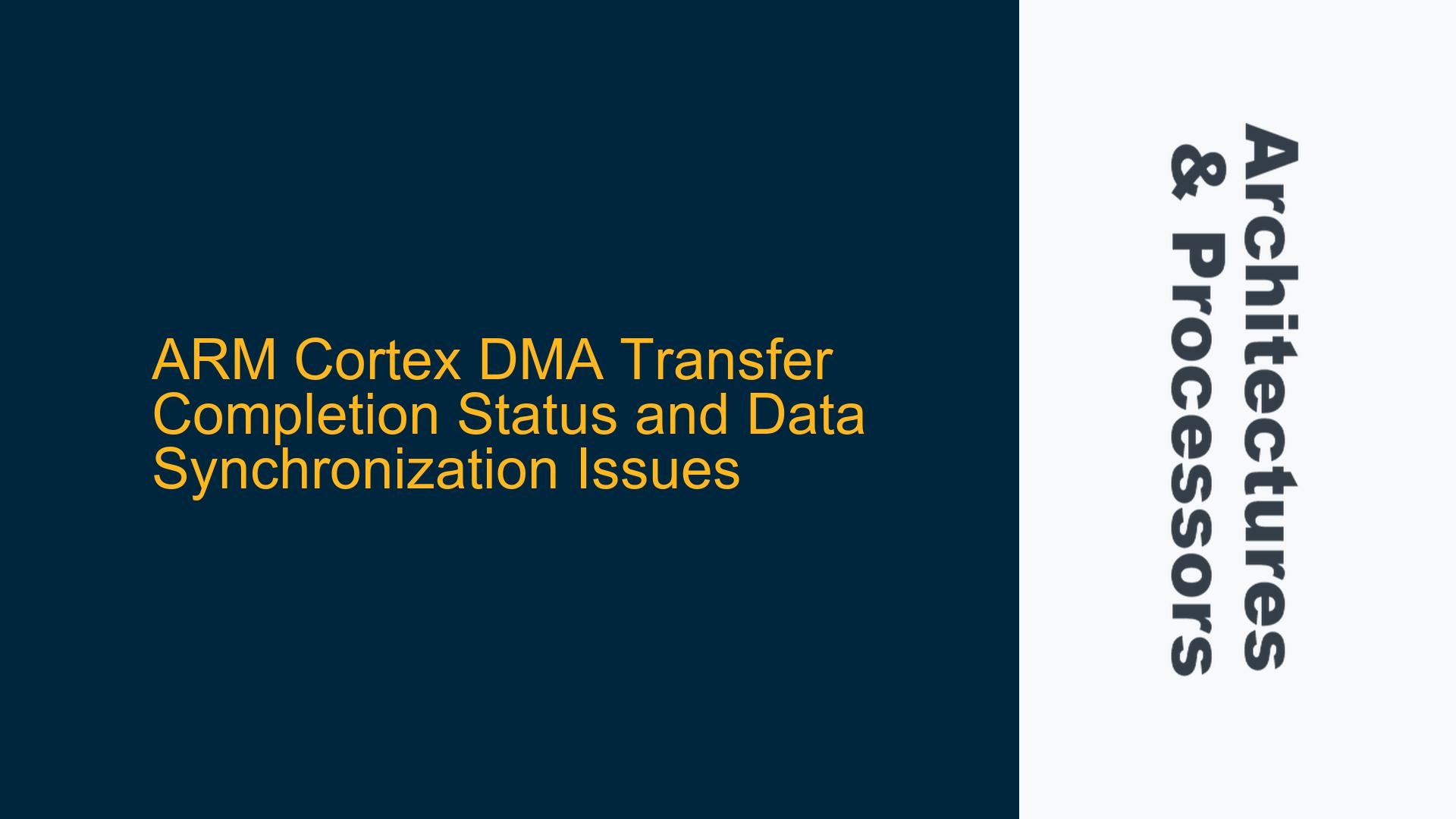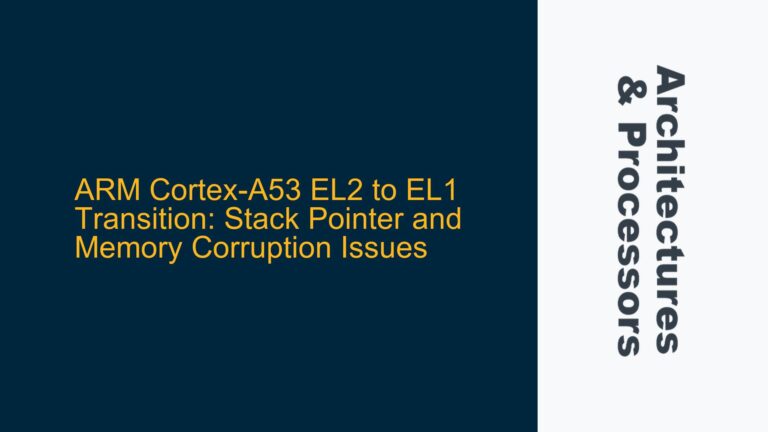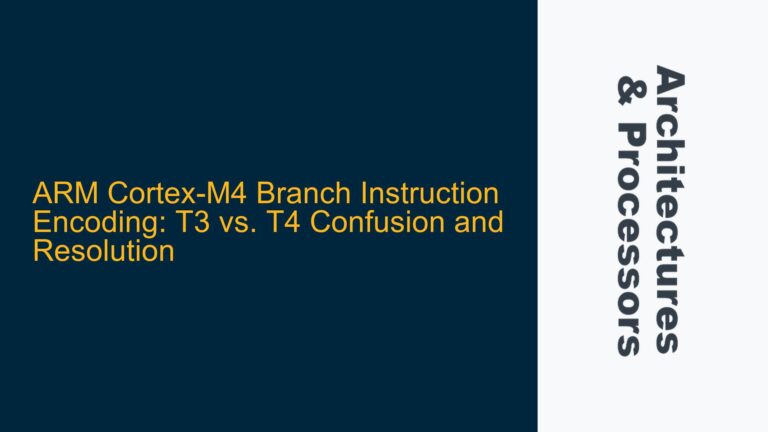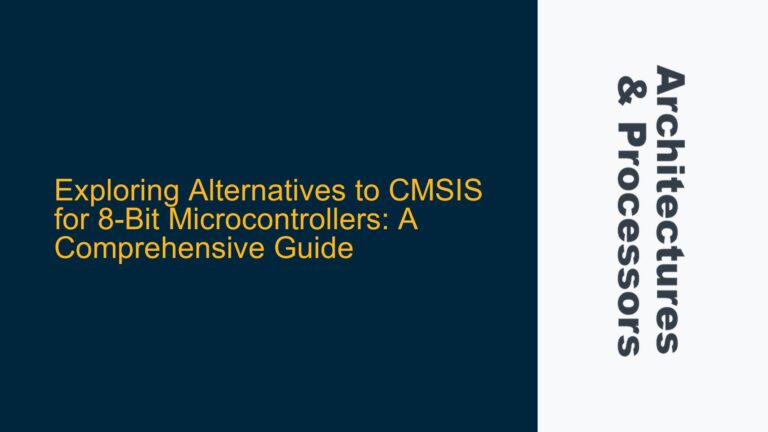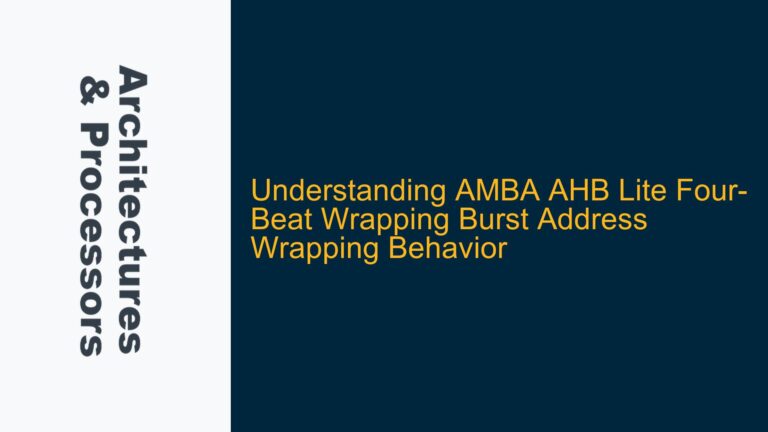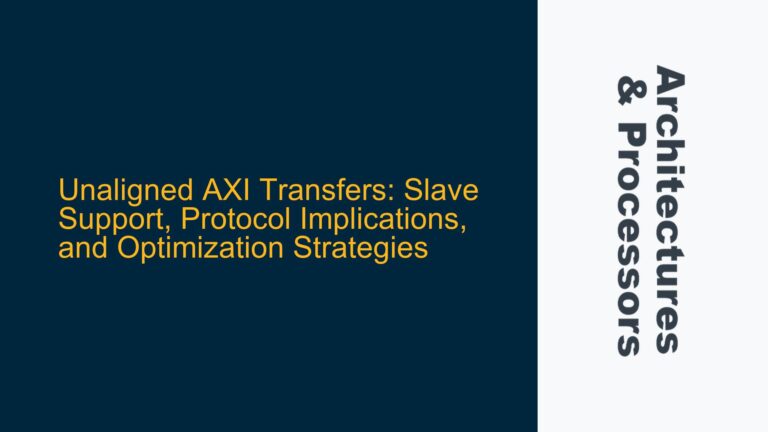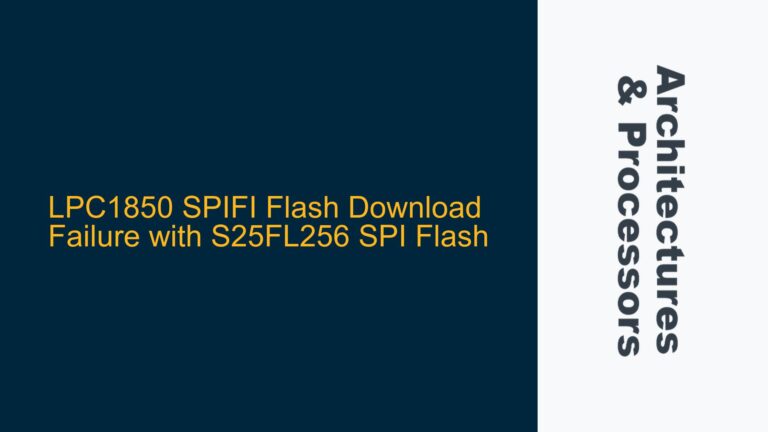ARM Cortex-M4 DMA Transfer Completion Status and Data Synchronization
When dealing with DMA (Direct Memory Access) transfers in ARM Cortex-M4 systems, ensuring proper synchronization between the completion status of the DMA transfer and the subsequent reading of the data buffer is critical. The ARMv8 reference manual, specifically in chapter K14.5.4, discusses the ordering of memory-mapped device control with payloads. The scenario described involves a DMA peripheral writing data to a memory buffer, followed by the processing element (PE) reading a status register to determine if the DMA transfer has completed, and then reading the data from the buffer.
The manual emphasizes that a Data Memory Barrier (DMB) or a load-acquire operation is insufficient in this context. The reason is that the issue is not solely about the observation order of memory operations but also about ensuring that the status register read (which is a read from a completer) correctly reflects the completion of the DMA transfer before the data buffer is read. The manual provides a code example to illustrate this:
P1 WAIT ([X4] == 1) ; X4 contains the address of the status register,
; and the value '1' indicates completion of the DMA transfer
DSB <domain>
LDR W5, [X2] ; reads data from the data buffer
In this code, P1 WAIT ([X4] == 1) is a loop that waits until the status register at address X4 indicates that the DMA transfer is complete. The DSB <domain> instruction ensures that all memory accesses before the barrier are completed before any subsequent memory accesses are executed. Finally, LDR W5, [X2] reads the data from the buffer at address X2.
The confusion arises because one might assume that a Data Memory Barrier (DMB) would be sufficient to ensure that the status register read and the data buffer read are correctly ordered. However, the manual clarifies that a DMB is not enough because the problem is not just about the order of observations but also about ensuring that the status register read correctly reflects the completion of the DMA transfer before the data buffer is read.
Memory Barrier Omission and Cache Invalidation Timing
The core issue here revolves around the timing and ordering of memory operations, particularly in the context of DMA transfers and status register reads. The ARM architecture provides several mechanisms to control the ordering of memory operations, including Data Memory Barriers (DMB), Data Synchronization Barriers (DSB), and load-acquire/store-release operations. However, these mechanisms have different semantics and are used in different contexts.
A Data Memory Barrier (DMB) ensures that memory operations before the barrier are completed before any memory operations after the barrier are executed. However, a DMB does not guarantee that the effects of a write operation (such as a DMA transfer) are visible to all observers in the system. This is particularly important in systems with multiple cores or DMA peripherals, where the visibility of memory writes can be delayed due to caching or buffering.
In the context of DMA transfers, the status register read is a read from a completer, which means it is a read from a device that is not directly involved in the DMA transfer. The completer may have its own buffering or caching mechanisms, which can delay the visibility of the DMA transfer completion status. Therefore, a DMB is not sufficient to ensure that the status register read correctly reflects the completion of the DMA transfer before the data buffer is read.
The ARMv8 reference manual specifies that a Data Synchronization Barrier (DSB) is required in this context. A DSB ensures that all memory accesses before the barrier are completed before any subsequent memory accesses are executed. This includes ensuring that the effects of the DMA transfer are visible to the completer before the status register is read. The DSB instruction effectively synchronizes the memory system, ensuring that all previous memory operations are completed before any subsequent operations are executed.
Implementing Data Synchronization Barriers and Cache Management
To correctly handle the synchronization between DMA transfer completion and data buffer reads, the following steps should be taken:
-
Wait for DMA Transfer Completion: The processing element (PE) should wait until the status register indicates that the DMA transfer is complete. This is typically done using a loop that polls the status register until it reaches the expected value.
-
Insert a Data Synchronization Barrier (DSB): After the status register indicates that the DMA transfer is complete, a DSB instruction should be inserted to ensure that all memory operations related to the DMA transfer are completed before any subsequent memory operations are executed. This ensures that the data buffer is in a consistent state before it is read.
-
Read the Data Buffer: After the DSB instruction, the data buffer can be safely read. The DSB ensures that the data buffer contains the correct data from the DMA transfer.
The following code example illustrates these steps:
P1 WAIT ([X4] == 1) ; Wait until the status register at address X4 indicates DMA completion
DSB <domain> ; Data Synchronization Barrier to ensure all previous memory operations are completed
LDR W5, [X2] ; Read the data from the buffer at address X2
In this code, P1 WAIT ([X4] == 1) is a loop that waits until the status register at address X4 indicates that the DMA transfer is complete. The DSB <domain> instruction ensures that all memory operations related to the DMA transfer are completed before the data buffer is read. Finally, LDR W5, [X2] reads the data from the buffer at address X2.
Cache Management Considerations
In systems with caches, additional considerations may be necessary to ensure that the data buffer is in a consistent state before it is read. If the data buffer is cached, the cache may contain stale data from before the DMA transfer. In this case, the cache should be invalidated before reading the data buffer to ensure that the most recent data from the DMA transfer is read.
The following steps should be taken to manage the cache:
-
Invalidate the Cache: Before reading the data buffer, the cache should be invalidated to ensure that any stale data is removed. This can be done using the
DC IVAC(Data Cache Invalidate by Virtual Address to PoC) instruction. -
Insert a Data Synchronization Barrier (DSB): After invalidating the cache, a DSB instruction should be inserted to ensure that the cache invalidation is completed before any subsequent memory operations are executed.
-
Read the Data Buffer: After the DSB instruction, the data buffer can be safely read. The cache invalidation ensures that the data buffer contains the most recent data from the DMA transfer.
The following code example illustrates these steps:
P1 WAIT ([X4] == 1) ; Wait until the status register at address X4 indicates DMA completion
DC IVAC, X2 ; Invalidate the cache for the data buffer at address X2
DSB <domain> ; Data Synchronization Barrier to ensure cache invalidation is completed
LDR W5, [X2] ; Read the data from the buffer at address X2
In this code, P1 WAIT ([X4] == 1) is a loop that waits until the status register at address X4 indicates that the DMA transfer is complete. The DC IVAC, X2 instruction invalidates the cache for the data buffer at address X2. The DSB <domain> instruction ensures that the cache invalidation is completed before the data buffer is read. Finally, LDR W5, [X2] reads the data from the buffer at address X2.
Multi-Copy Atomicity and Coherency
The discussion also touches on the concepts of multi-copy atomicity and coherency in the ARM memory model. Multi-copy atomicity refers to the property that a memory write from one observer, if observed by another observer, is then observed by all other observers that access the location coherently. The ARM memory model is described as "Other-multi-copy atomic," which means that the memory write effect from an observer, if observed by a different observer, is then observed by all other observers that access the location coherently.
In the context of DMA transfers, this means that once the DMA transfer is observed by the processing element (PE) through the status register, the data buffer should be coherently visible to all other observers in the system. This is why a Data Synchronization Barrier (DSB) is necessary to ensure that the DMA transfer is fully completed and visible before the data buffer is read.
The term "coherently" in this context refers to the property that all observers in the same inner-shareable domain will see the same value for a given memory location. This ensures that the data buffer is consistently visible to all observers in the system, including the processing element (PE) and any other peripherals or cores that may access the buffer.
Conclusion
In summary, when dealing with DMA transfers in ARM Cortex-M4 systems, it is crucial to ensure proper synchronization between the completion status of the DMA transfer and the subsequent reading of the data buffer. A Data Memory Barrier (DMB) is not sufficient in this context because the issue is not just about the order of observations but also about ensuring that the status register read correctly reflects the completion of the DMA transfer before the data buffer is read. Instead, a Data Synchronization Barrier (DSB) should be used to ensure that all memory operations related to the DMA transfer are completed before any subsequent memory operations are executed.
Additionally, in systems with caches, cache management should be considered to ensure that the data buffer is in a consistent state before it is read. This may involve invalidating the cache before reading the data buffer and inserting a DSB to ensure that the cache invalidation is completed.
By following these steps, you can ensure that your ARM Cortex-M4 system correctly handles DMA transfers and avoids subtle hardware-software interaction issues and performance bottlenecks.
